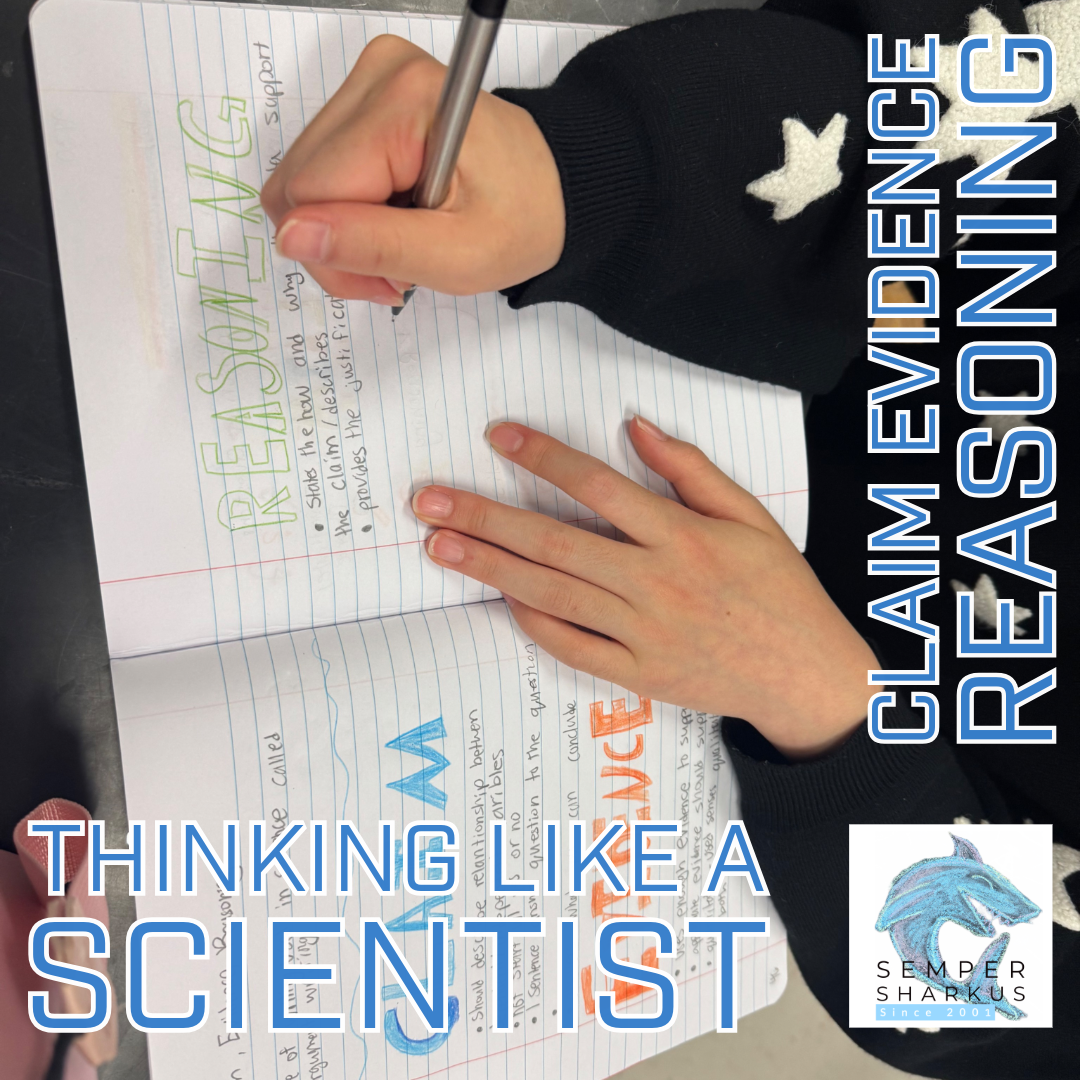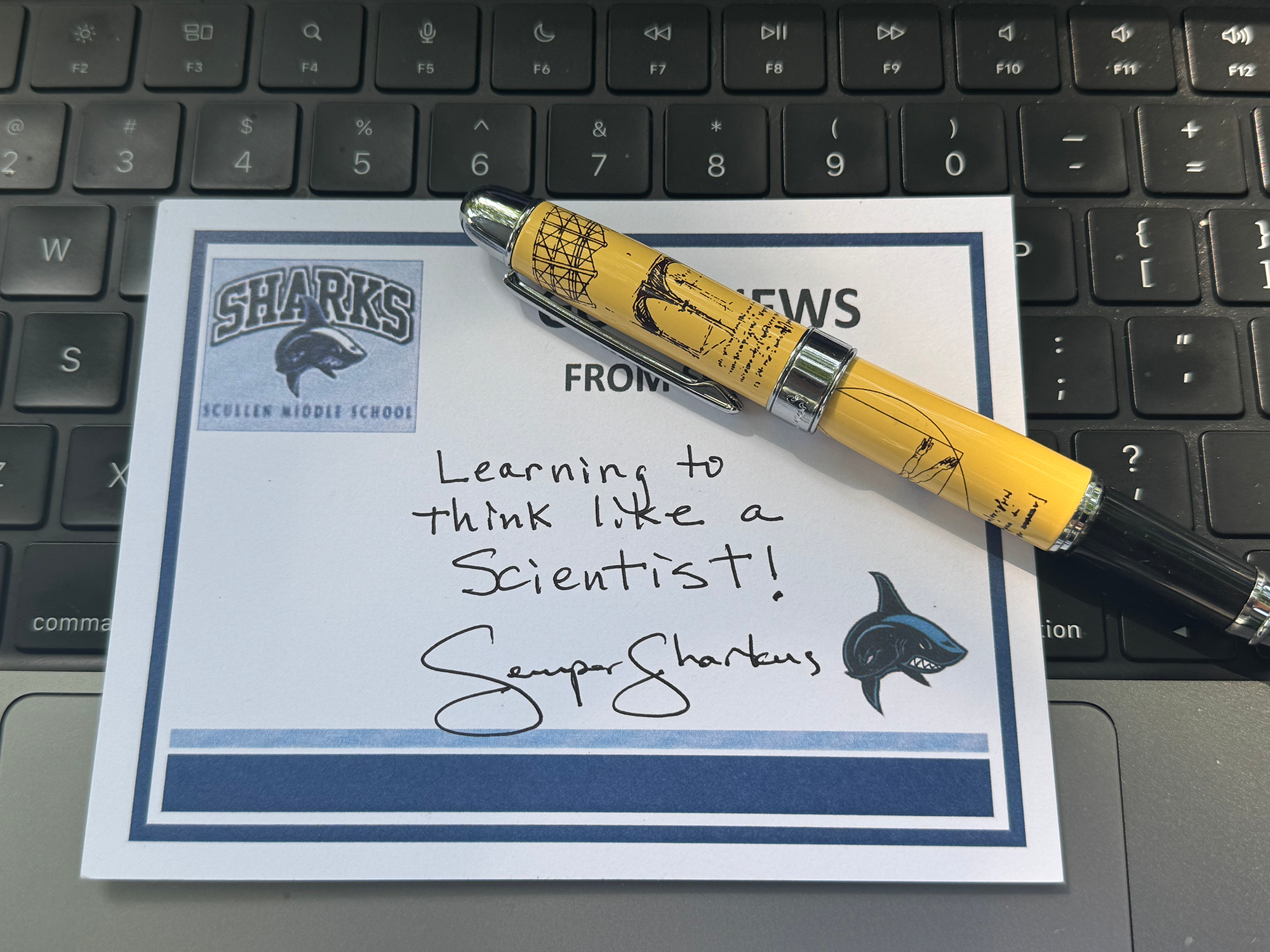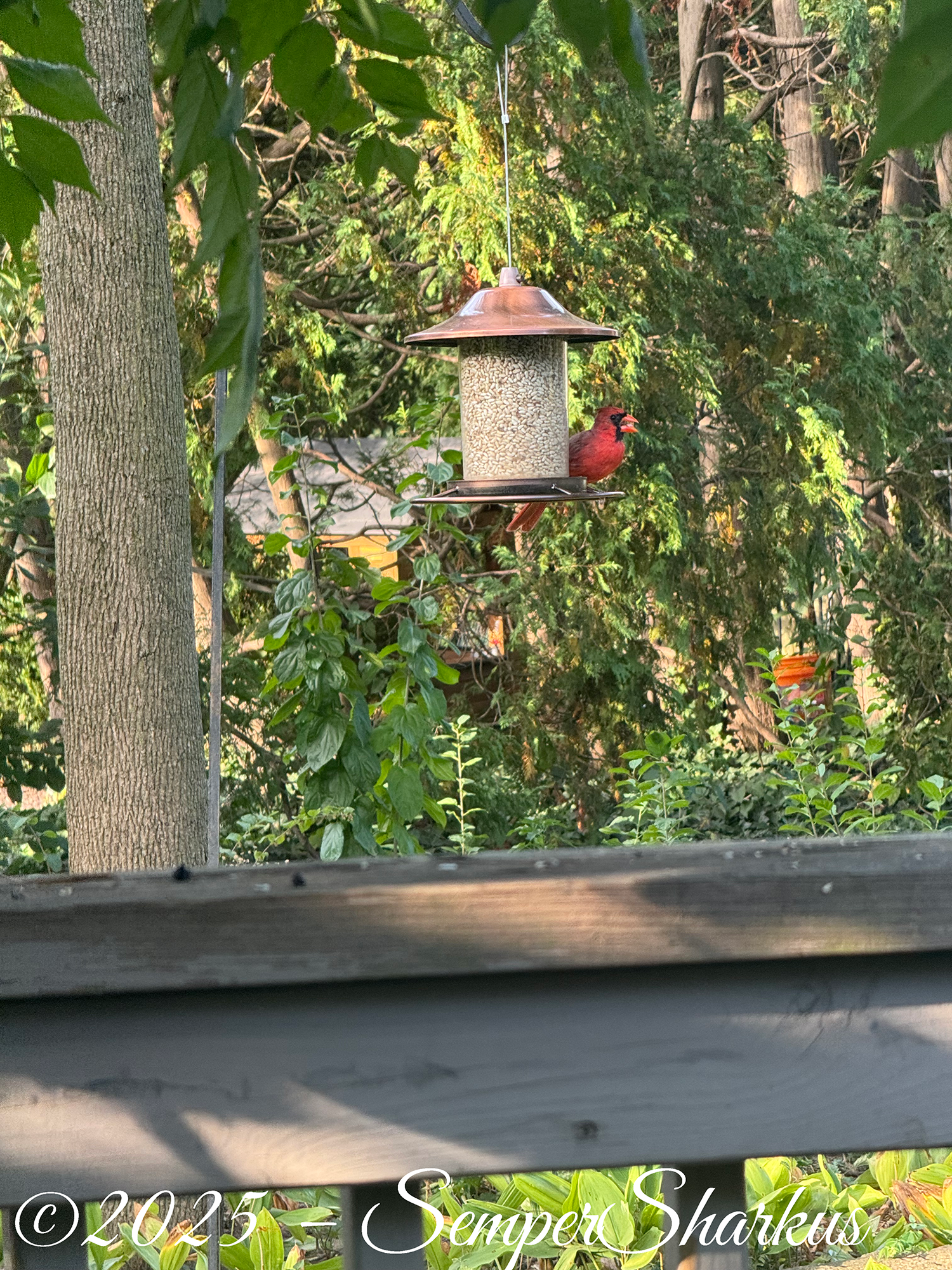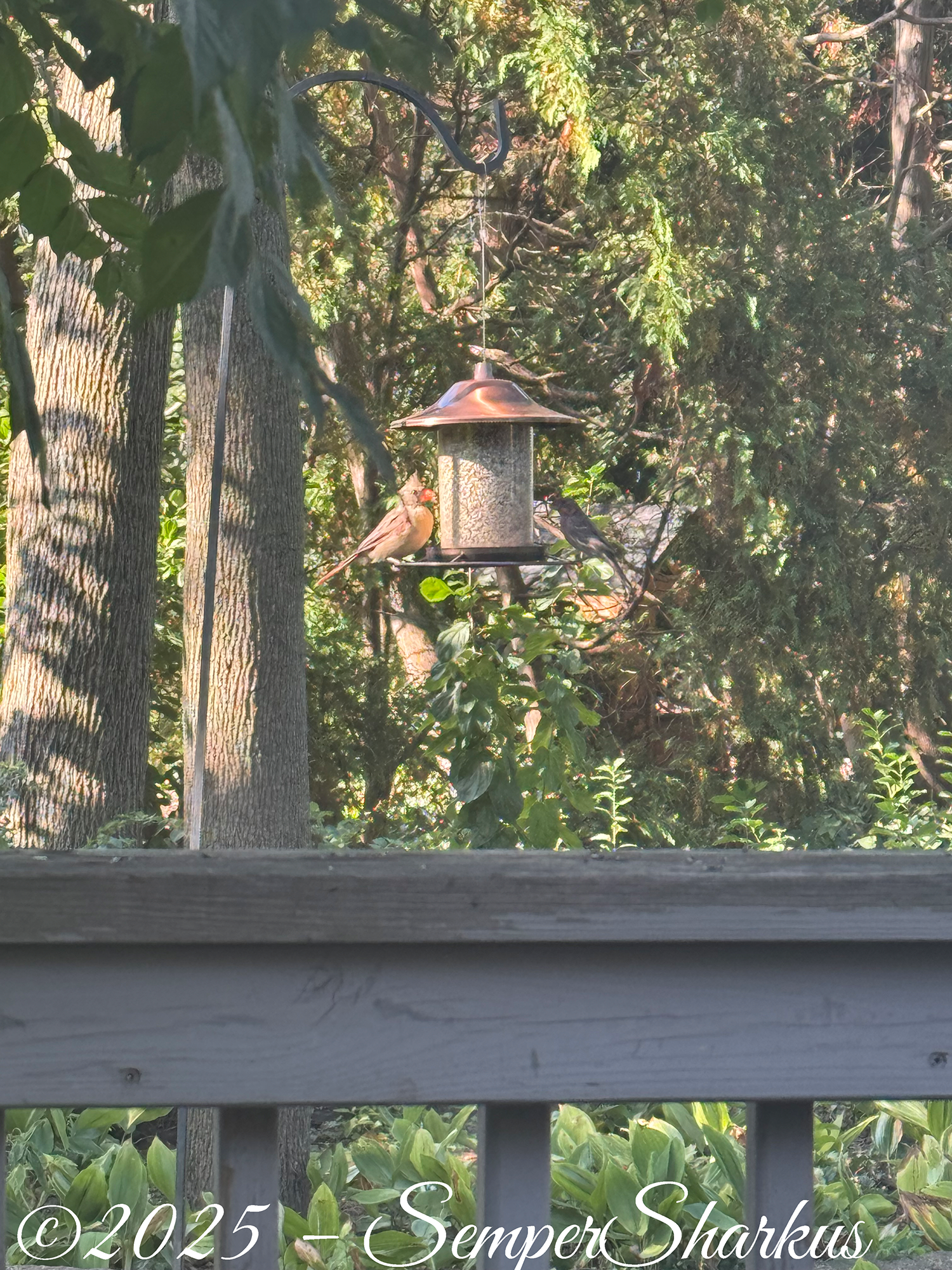I am enjoying a beautiful fall day at my summer office on the deck. It’s been far too long since I posted an update or anything at Semper Sharkus.
I enjoy being outside and practicing being a scientist or being an ornithologist or simply being curious. A few years ago, I knew little about birds and birding. I ‘became’ birder during the summer of 2018 and my curiosity grew during the pandemic when I was at home more than I was at school. This past summer my daughter and wife gave me a hummingbird feeder that has a camera for Father’s Day and I have enjoyed it. I have other hummingbird feeders, as well as seed feeders within view of my ‘desk’ and it is very relaxing and peaceful to work outside on a beautiful Sunday afternoon.
My last post was a year ago and it was about asking for help, which is a good message but I had a flashback to it this past week when I was teaching measurement, observation, and curiosity to this year’s classes.
We watched a video, called “Learn the Metric System in 5 Minutes” it is below….
When we were reviewing what they learned – their take aways I call “Noticings” and “Wonderings” – one of the “noticings” they shared was that the ancient Egyptians were the first civilization that used a standard system of measurement.
Egyptian civilization goes back seven millennia and they were the first according to the video.
I learned about ancient Egyptian culture when I was in sixth grade (fifty-two years ago) and the Egyptians are known for their significant contributions to our culture and today’s ideas about scientific thinking.
The assignment was to use a worksheet to practice their measurement skills. I gave each student a worksheet and a paper ruler which I had downloaded from the internet and printed for every student . The following day we were reviewing our findings and their answers. What we discovered was surprising – our answers didn’t match. They were off.
So, I asked them what did they think was the problem?
They weren’t sure, but a few suggested maybe they (the students) were making mistakes as they measured…. one student suggested we check to see if our paper rulers were accurate. So we did, and it turned out the paper rulers were an almost a centimeter shorter than the plastic and wooden rulers I have for the classroom. So I collected all of the paper rulers and recycled them. NOTE: Actually, I discovered this after I had given them the rulers, but before we went over the answers in class the following day.
I apologized to the classes for my mistake and asked them what the big takeaway was from my mistake of giving all of the students an inaccurate measuring device?
Many of their responses centered on learning from your mistakes, which is a good lesson to learn and put in practice. One student suggested I could have (and should have) checked to make sure that the paper ruler was accurate. Then yet another suggested we can’t trust the internet.
All of these are great lessons to learn, but the takeaway I wanted them to have was that if the ancient Egyptians had not used a standard measurement system, could they have build pyramids which have lasted millennia? It was a why a standard measurement system was good.
It was at that moment, I could sense the shift in thinking and they could too.
More one student asked me if I did it on purpose to make my point. But it was a mistake, I make plenty. Sometimes I actually learn from them.

We’ve been busy in sixth grade science in our first six weeks. We’ve created science notebooks so all students can practice being scientists. They’ve learned scientists use a wide variety of skills including observation, inferencing, communication and record keeping skills, and above all being curious and full of wonder.
I have shared that science is the act of knowing and how we really learn science is by asking questions and making observation – noticing and wonderings.
Monday our students have a formative assessment over measurement – I expect students will do well and then we are on to gathering data, then using the data to create a graph. We’ll finish by publishing our findings using the Claim-Evidence-Reasoning format for scientific explanations.
The year is off to a great start. We have only just begun but I see sparks of curiosity and wonder every day and I am looking forward to seeing my students grow as young scientists.
Learning to think like a scientist. Once a shark, always a shark.



